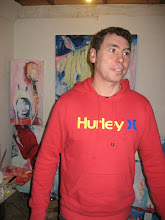CONTEMPORARY ART NEEDS A FIELD WITHIN WHICH ONES PRACTICE CAN BE DEFINED.
This field was provided by post modernist art, especially postmodernist sculpture.
Modernism is art about art. The journey towards making a work of art was as important as the work itself. This was the theory of influential art critic Clement Greenberg, ‘the essence of modernism lies in the use of the characteristic methods of a discipline to criticize the discipline itself, not in order to subvert it but to entrench it more fully in its area of competence,’ 1.
By the 1950’s modernism was a flagging art movement. Rosiland Crause described sculpture as collapsing in on itself as a result of modern art disrupting it from its traditional function.
Sculpture Crause describes pre modernist sculpture as site specific and monumental, a ‘historically bounded category and not a universal one’, p33. Sculpture according to Crause was representation, symbols and marking, normally figurative and vertical. Their pedestals mediating, ‘between actual site and representational sign’, p33. Modernism saw sculptures being multiplied and moved from site. It was no longer monument it was homeless and nomadic.
Postmodernism saw a new approach to sculpture. A discipline that revisited materials, technique and explored sculptural ideas and technology. Crause formulates or structures the possibilities of Post-Modern sculpture using concise mathematical diagrams.
She states ‘that the expanded field of postmodernism happens at a specific moment in the recent history of art’, p44. This was the late 1960’s; artists were looking to be diverse and open. Many artists looked to reject the gallery and curator as a frame. ‘For one after another Robert Morris , Robert Smithson, Michael Heizer, Richard Serra, Walter De Maria, Robert Irwin, Sol Le Witt, Bruce Nauman....had entered a situation the logical conditions of which can no longer be described as modernist’, p41. ‘Some artists moved the earth to create great colossal primal symbols while others punctuated the horizon with man-made signposts,’ 2. ‘Although primarily sculptural, this tendency also encompasses performance and conceptualism. In all cases, mapping, photographic documentation and or text-based accounts are an intrinsic part of the work,’3.
Sculpture had become the practice most artists, could slip in and out of and define their art by.
1. Clement Greenberg, ‘Modernist Painting’, Arts Yearbook IV, New York, 1961; reprinted in Minimal Art: A Critical Anthology, op. Cit. P. 70
2. Brian Wallis, Land and Environmental Art, ed. Jeffery Kastner, Phadion Press Ltd, 1998, reprinted 2001, 2
3. Brian Wallis, Land and Environmental Art, ed. Jeffery Kastner, Phadion Press Ltd, 1998, reprinted 2001, 2
Subscribe to:
Post Comments (Atom)


It will be very interesting to relate it with the installation art. If installation art been described as “an artistic genre of site-specific, three-dimensional works designed to transform the perception of a space” then what’s the distinction between modern sculpture and installation art which mostly been presented in a specific place and time.
ReplyDelete